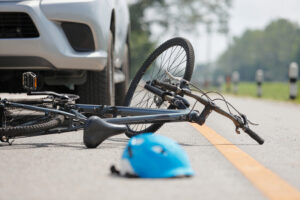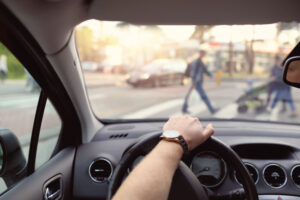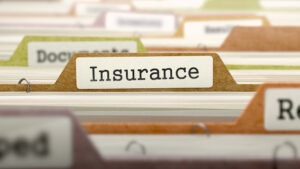Late at night, a Fort Hunt pedestrian was seriously injured after being struck by an SUV at a Collingwood Road intersection. The driver of the vehicle fled the scene and the pedestrian was taken to a local hospital. While this is the most serious accident to happen on this particular road in recent years, it mirrors an alarming trend of increasing pedestrian hit-and-run crashes across the nation.
In 2018, pedestrian deaths rose both nationally and in the greater Washington, D.C. area. Pedestrians accounted for nearly one in three of the 290 deaths in the greater Washington area, which is the highest proportion of regional pedestrian fatalities in over 10 years. Nationally, pedestrians account for around one in five total traffic fatalities.
Most Injured and Killed Hit-and-Run Victims are Pedestrians
Hit-and-run crashes are rising across the country, with research estimating one occurring somewhere in the U.S. every minute. According to the AAA Foundation, pedestrians account for 65% of fatal hit-and-run crashes, while just 1% of driver fatalities are related to hit-and-runs. At night, when pedestrians are especially vulnerable due to reduced visibility, hit-and-run accidents become even more likely, resulting in 20% of all pedestrian fatalities being related to nightime hit-and-run crashes.
One study found that drivers involved in single vehicle, single pedestrian fatal crashes, are almost 4.4 times more likely to flee the scene of an accident between midnight and 4 a.m. than between 8 a.m. and noon. This is likely caused in part by the reduced visibility at night, which increases the chances that a driver won’t get caught. Drivers are also more likely to be engaging in risky driving behaviors at night, such as driving under the influence of drugs or alcohol, which may make them even more motivated to flee.
Charges and Penalties Associated with Hit-and-Run Crashes in Virginia
Whether a crash is a driver’s fault or not, all drivers have a legal and moral obligation to stop, and can face criminal charges if they don’t. All 50 states have laws outlining the appropriate way to respond to a crash. In Virginia, Virginia Codes § 46.2-894 and § 46.2-896 outline a driver’s duty to stop after any accident and the penalties associated with failing to do so.
After an accident, drivers must stop and report the name, address, driver’s license number and vehicle registration to law enforcement and to any injured/struck party. If the injured party is not capable of understanding what happened, drivers should still report the information to law enforcement and any other relevant parties at the scene (e.g., another occupant of the vehicle that was struck).
Drivers are also expected to make reasonable efforts to locate the person struck and report their information to law enforcement – it is not the responsibility of the injured party to seek out crash related information. If someone is injured, the driver should provide them with reasonable assistance, such as taking them to a hospital if medical treatment is necessary or requested.
Even if there is no injured party present, as in cases where the vehicle struck was unoccupied, the driver still has an obligation to make these reasonable efforts to seek the owner of the vehicle and report the necessary information. In such cases where the owner is not able to be located, the driver shall leave a note or other means of communicating necessary information to the owner, and report the accident to law enforcement within 24 hours.
Violating these legal duties and fleeing the scene of a crash in Virginia can result in the following charges and penalties:
1. Charge: Class 5 felony if the accident results in death, injury, or more than $1,000 in damage to property (e.g., car, bike, etc).
Penalty: 18.2-10: a term of imprisonment 1-10 years, or at the discretion of the jury or the judge, confinement in jail for up to 12 months and/or a fine up to $2,500
2. Charge: Class 1 misdemeanor if less than $1,000 in damage to property
Penalty: 18.2-11: confinement in jail for no more than 12 months and/or a fine of no more than $2,500
3. Charge: Class 4 misdemeanor if property struck is unattended and damage is less than $250
Penalty: 18.2-11: fine of not more than $250 and 3 demerit points on driver’s license
When a Hit-and-Run Driver Is Not Found
In an ideal world, hit-and-run drivers would always be identified and held liable for the damages they caused to a person, vehicle or other property. Unfortunately, this is not always the case. What many people don’t realize, however, is that even when a hit-and-run driver is not found, victims of hit-and-run crashes can still be compensated through their uninsured motorist coverage.
Under Virginia’s uninsured motorist insurance coverage law, Virginia Code § 38.2-2206, automobile insurance policies are required to cover damages (within the policy limit) caused by an uninsured motorist. In cases where a hit-and-run driver is unknown, they are treated as an uninsured driver. Injured parties and owners of damaged property can act against the unknown driver as “John Doe” and the claim or suit proceeds against their own insurer as if the unknown driver was in fact known. This is an important and lawful way for injured parties to be fully compensated for the damage caused by unknown drivers.
The Takeaway
Far too often, pedestrians are injured and killed by hit-and-run drivers. It should never fall on victims’ shoulders to burden the cost of medical bills, loss of income, pain and suffering and other damages that come with being struck by a hit-and-run driver. If a driver doesn’t stop and is not identified, victims are entitled to recover damages for their injuries through their own uninsured motorist coverage.
If you or a loved one was the victim of a hit-and-run accident, call us at 703-836-3366, email tcurcio@curciolaw.com, or visit us at curciolaw.com, and we will follow up with you right away to discuss your legal options.

Tom Curcio has devoted his career to representing people seriously injured or killed in car, pedestrian, bicycle, and truck crashes, and by dangerous dogs, unsafe products, and premises. He works tirelessly to obtain the compensation his clients are legally entitled to so they may rebuild their lives with dignity. Tom is the co-author of the book Evidence For The Trial Lawyer, and a much sought-after speaker on personal injury, trial practice, evidence, and professionalism. Contact Tom at tcurcio@curciolaw.com.










Comments for this article are closed.